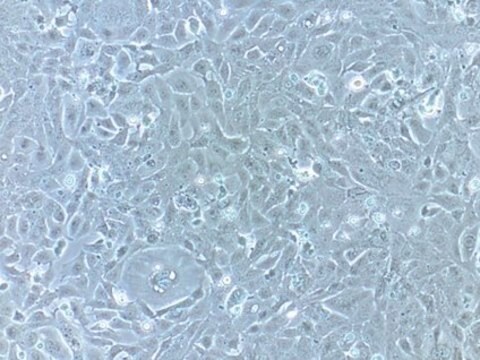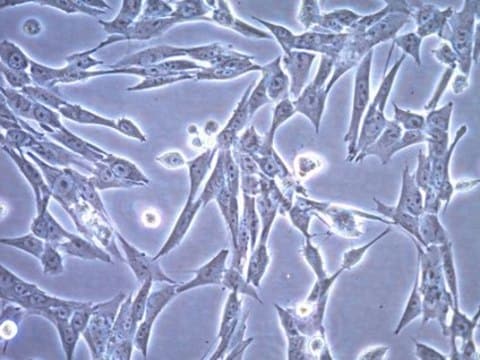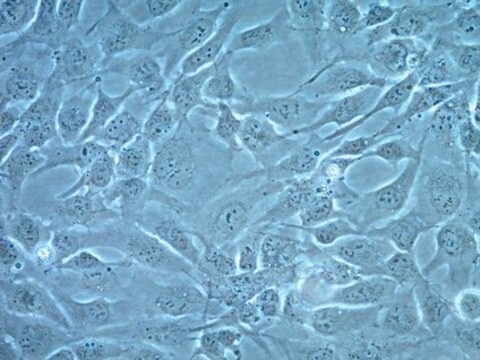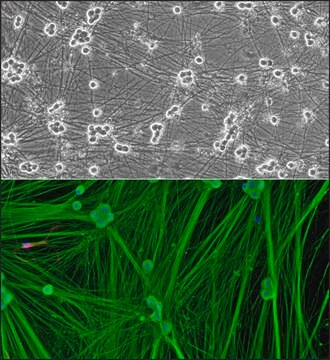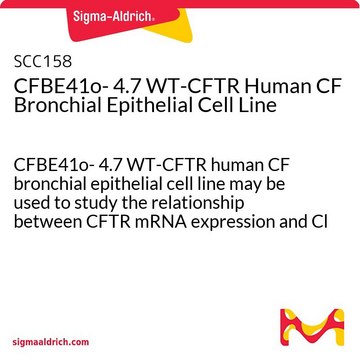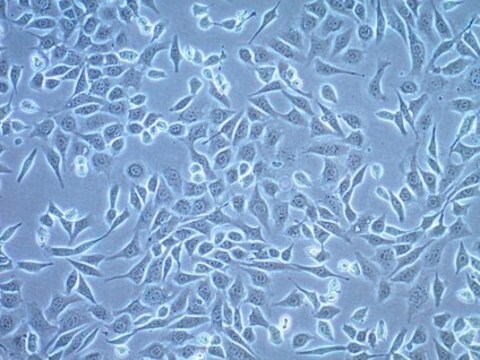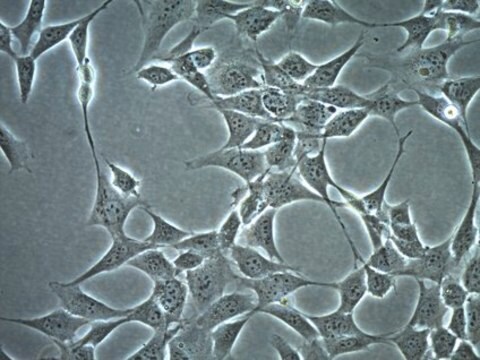SCC049
O9-1 Mouse Cranial Neural Crest Cell Line
Mouse
Synonym(s):
Multipotent mesenchymal cells
About This Item
Recommended Products
Product Name
O9-1 Mouse Cranial Neural Crest Cell Line, stably expresses stem cell markers and neural crest markers
biological source
mouse
Quality Level
technique(s)
cell culture | stem cell: suitable
shipped in
liquid nitrogen
General description
Whole-genome expression profiling of O9-1 cells revealed that this line stably expresses stem cell markers (CD44, Sca-1, and Bmi1) and neural crest markers (AP-2a, Twist1, Sox9, Myc, Ets1, Dlx1, Dlx2, Crabp1, Epha2, and Itgb1). O9-1 cells are capable of contributing to cranial mesenchymal (osteoblast and smooth muscle) neural crest fates when injected into E13.5 mouse cranial tissue explants and chicken embryos. These results suggest that O9-1 cells represent multipotent mesenchymal cranial neural crest cells. The O9-1 cell line should serve as a useful tool for investigating the molecular properties of differentiating cranial neural crest cells. The O9-1 cell line can be propagated and passaged for at least 10 passages, and can differentiate into osteoblasts, chondrocytes, smooth muscle cells, and glial cells (Ishii, 2012).
Ishii, M., et al. (2012) A stable cranial neural crest cell line from mouse. Stem Cells Dev. 21(17): 3069-3080.
Cell Line Description
Application
Neuroscience
Stem Cell Research
Components
Quality
• Cells tested negative for infectious disease by a murine PCR panel (Mouse Essential CLEAR Panel by Charles River Animal Diagnostic Services)
• Cells tested negative for mycoplasma contamination
Physical form
Storage and Stability
Storage Class Code
10 - Combustible liquids
WGK
WGK 1
Flash Point(F)
Not applicable
Flash Point(C)
Not applicable
Certificates of Analysis (COA)
Search for Certificates of Analysis (COA) by entering the products Lot/Batch Number. Lot and Batch Numbers can be found on a product’s label following the words ‘Lot’ or ‘Batch’.
Already Own This Product?
Find documentation for the products that you have recently purchased in the Document Library.
Articles
Products to enable the creation of neural models specific for your research.
Protocols
Step-by-step culture protocols for neural stem cell culture including NSC isolation, expansion, differentiation and characterization.
Our team of scientists has experience in all areas of research including Life Science, Material Science, Chemical Synthesis, Chromatography, Analytical and many others.
Contact Technical Service